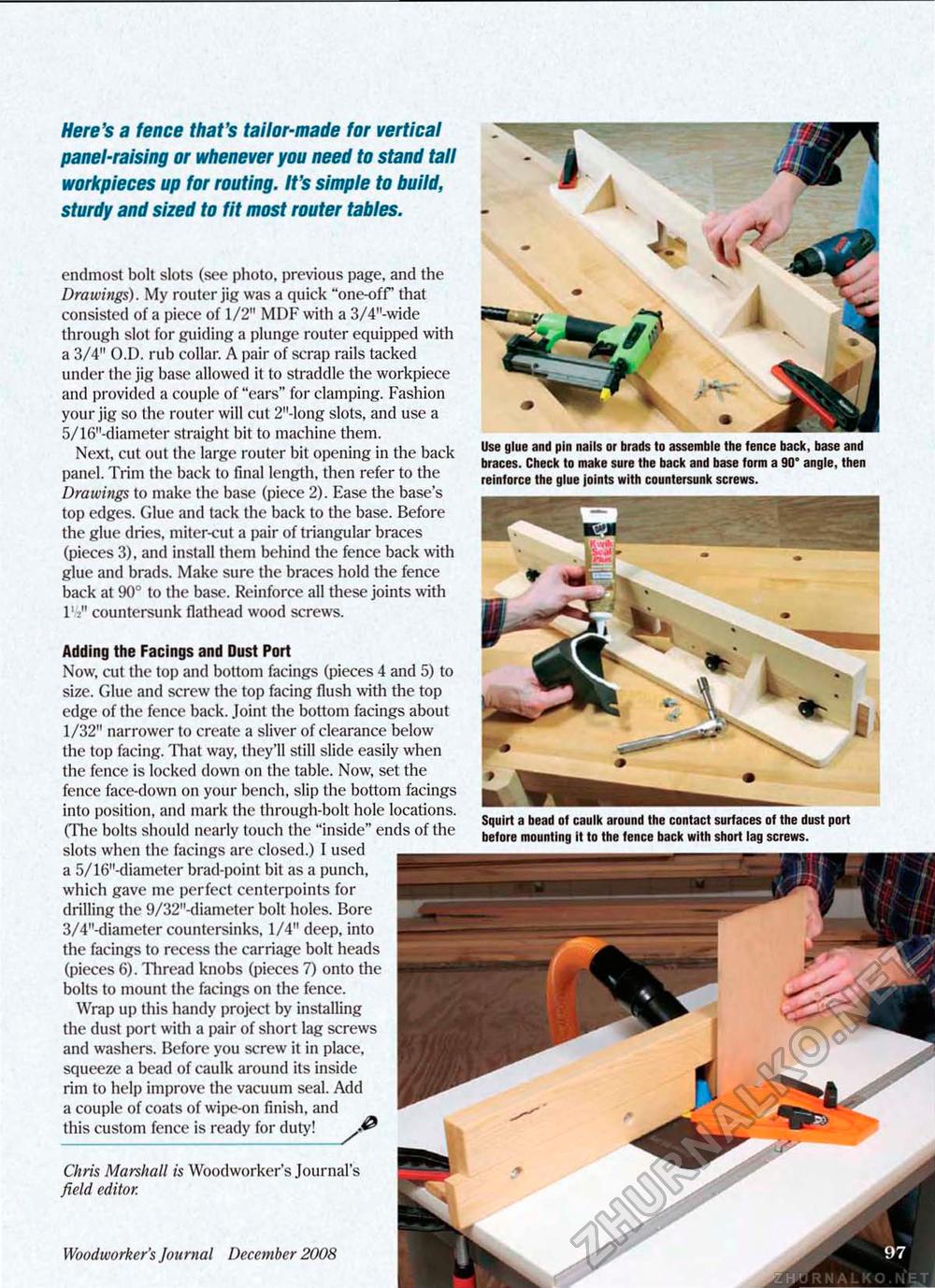Woodworker's Journal 2008-32-6, страница 98
Here's a fence that's tailor-made for vertical panel-raising or whenever you need to stand tall workpieces up for routing. It's simple to build, sturdy and sized to fit most router tables. endmost bolt slots (see photo, previous page, and the Drawings). My router jig was a quick "one-off' that consisted of a piece of 1/2" MDFwith a 3/4'-wide through slot for guiding a plunge router equipped with a 3/4" O.D. rub collar. A pair of scrap rails tacked under the jig base allowed it to straddle the workpiece and provided a couple of "ears" for clamping. Fashion your jig so the router will cut 2"-long slots, and use a 5/16"-diameter straight bit to machine them. Next, cut out the large router bit opening in the back panel. Trim the back to Una! length, then refer to the Drawings to make the base (piece 2). Ease the base's top edges. Glue and tack the back to the base. Before the glue dries, miter-cut a pair of triangular braces (pieces 3), and install (hem behind the fence back with glue and brads. Make sure the braces hold the fence back at 90° to the base. Reinforce all these joints with I1;" countersunk flathead wood screws. Woodworker's Journal December 2008 98 Adding the Facings and Dust Port Now, cut the lop ant! bottom facings {pieces 4 and 5) to size. Glue and screw the top facing flush with the top edge of the fence back. Joint the bottom facings about 1/32" narrower to create a sliver of clearance below the top facing. That way, they'll still slide easily when the fence is locked down on the table. Now, set the fence face-down on your bench, slip the bottom facings into position, and mark the through-bolt hole locations. (The bolts should nearly touch the "inside" ends of the slots when the facings are closed.) 1 used a 5/16"-tfiameter brad-point bit as a punch, which gave me perfect centerpoints for drilling the 9/32"-diameter boil holes. Bore 3/4"-diameter countersinks, 1/4" deep, into the facings to recess the carriage bolt heads (pieces 6). Thread knobs (pieces 7) onto the bolts to mount the facings on the fence. Wrap up this handy project by installing the dust port with a pair of short lag screws and washers. Before you screw it in place, squeeze a bead of caulk around its inside rim to help improve the vacuum seal. Add a couple of coats of wipe-on finish, and this custom fence is ready for duty! jP- Chris Marshall is Woodworker's Journal's field editor. Squirt a bead of caulk around the contact surfaces of the dust port before mounting it to the fence back with short lag screws. Use glue and pin nails or brads to assemble the tence bach, base and braces. Check to make sure the back and base form a 90° angle, then reinforce the glue joints with countersunk screws. |








